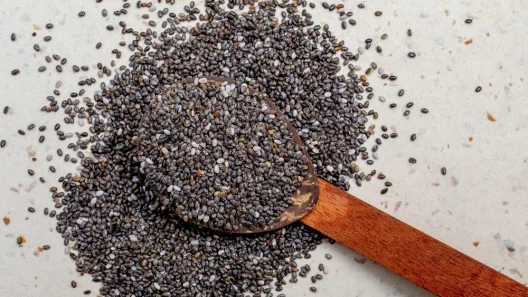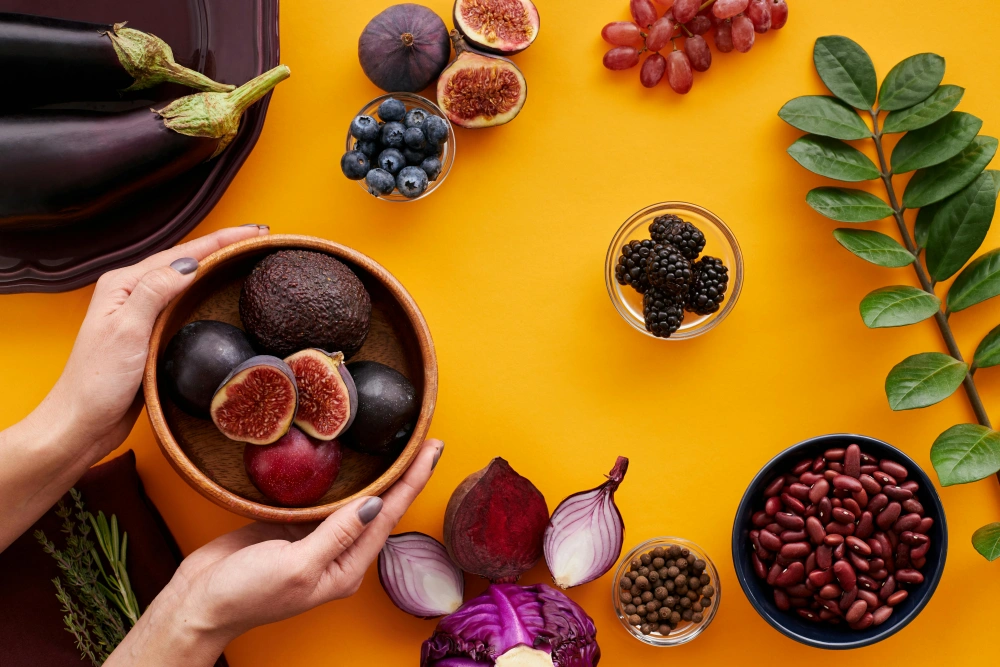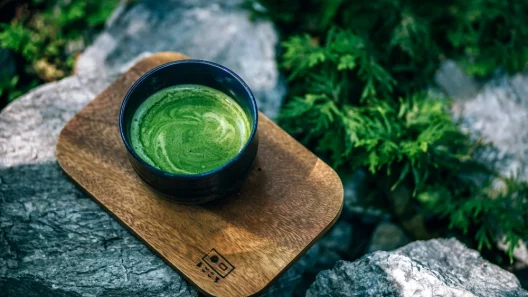Superfoods have transitioned from marketing buzzword to nutritional mainstay in 2025, representing nature’s most concentrated sources of vitamins, minerals, antioxidants, and unique phytochemicals. While the term itself has no official scientific definition, it generally refers to nutrient-dense foods that offer exceptional health benefits beyond basic nutrition, often containing high levels of multiple beneficial compounds . The growing interest in superfoods reflects a broader shift toward preventative healthcare and personalized nutrition, as consumers increasingly seek natural approaches to support their wellbeing. At MyGreenRemedy, we believe in taking an evidence-based approach to superfoods, separating genuine nutritional powerhouses from passing food fads. This comprehensive guide explores the science behind various superfood categories, their demonstrated health benefits, and practical ways to incorporate them into your daily diet for sustainable health improvement.
What Makes a Food a Superfood?
Nutrient Density Explained
The concept of nutrient density refers to the concentration of beneficial nutrients relative to the food’s calorie content. True superfoods typically contain high levels of multiple nutrients, including vitamins, minerals, antioxidants, fiber, and unique bioactive compounds that positively impact health . What sets superfoods apart is not just their individual nutrient content, but their synergistic combination of compounds that work together to enhance bioavailability and efficacy. For example, the combination of fat-soluble vitamins and healthy fats in avocado or the presence of vitamin C alongside iron in leafy greens both improve nutrient absorption .
Common Superfood Categories
Superfoods span several categories, each with distinct nutritional profiles:
- Fruits and vegetables: Berries, leafy greens, cruciferous vegetables, and sweet potatoes are rich in antioxidants, vitamins, and fiber
- Sea plants: Sea moss, spirulina, and chlorella offer concentrated minerals and unique marine compounds
- Fermented foods: Yogurt, kefir, kimchi, and sauerkraut provide probiotics and enhanced nutrient availability
- Adaptogens: Mushrooms like reishi and lion’s mane help the body manage stress and maintain balance
- Traditional foods: Bone broth, matcha, and certain seeds and nuts have stood the test of time for their nutritional benefits
Myths vs. Science
It’s crucial to distinguish between marketing hype and scientific reality when evaluating superfoods. While the term “superfood” itself was originally coined for marketing purposes, many foods labeled as such do have substantial research supporting their health benefits . However, no single food can provide all necessary nutrients or prevent disease on its own. The true value of superfoods lies in their incorporation into a balanced dietary pattern rather than as miracle solutions to health problems .
Superfoods for Gut Health
Fermented Foods and Microbiome Support
Fermented foods have gained significant scientific attention for their role in supporting gut health through natural probiotics – beneficial bacteria that colonize the digestive tract. These foods undergo lacto-fermentation, where natural bacteria feed on the sugar and starch in the food, creating lactic acid. This process preserves the food and creates various strains of probiotics, enzymes, B vitamins, and omega-3 fatty acids . Regular consumption of fermented foods has been associated with improved digestion, enhanced nutrient absorption, strengthened immune function, and even positive effects on mental health through the gut-brain axis.
Prebiotics vs. Probiotics
While probiotics are beneficial bacteria themselves, prebiotics are specialized plant fibers that nourish the good bacteria already living in your gut. Many superfoods serve as prebiotics, including garlic, onions, leeks, asparagus, bananas, and whole grains. The combination of prebiotic and probiotic foods creates a synergistic effect for optimal gut health, allowing beneficial bacteria to thrive and multiply .
For a comprehensive look at fermented superfoods, explore our detailed guide to Fermented Superfoods for Gut Health: Kimchi, Yogurt & More.
Ocean Superfoods
Nutrient-Rich Sea Plants
Ocean superfoods like sea moss, spirulina, and chlorella have gained popularity for their exceptional mineral content and unique marine phytochemicals. These aquatic plants absorb nutrients from seawater, making them rich sources of iodine, magnesium, calcium, iron, and trace minerals often depleted in land-grown crops . Sea moss (Chondrus crispus), in particular, contains carrageenan, a gelatinous substance that supports digestive health and may have prebiotic effects on gut bacteria .
Immune and Thyroid Support
The high iodine content in ocean superfoods makes them particularly valuable for thyroid function, as iodine is essential for the production of thyroid hormones that regulate metabolism, growth, and development . Additionally, the unique antioxidant compounds in marine plants, including fucoxanthin and phycocyanin, provide anti-inflammatory benefits and immune system support beyond what’s typically found in terrestrial plants .
Discover more about marine nutrition in our deep dive on Sea Moss Benefits: Why It’s Trending & How to Use It.
Adaptogenic Superfoods
Understanding Adaptogens
Adaptogens are a unique class of herbal substances that help the body adapt to stress and maintain physiological balance (homeostasis). For a plant to be considered an adaptogen, it must be non-toxic in normal doses, help the body cope with various stressors, and bring the body back into balance regardless of how stress is affecting it . These remarkable substances work primarily by influencing the hypothalamic-pituitary-adrenal (HPA) axis, the body’s central stress response system, and modulating the production of stress hormones like cortisol .
Medicinal Mushrooms
Adaptogenic mushrooms like reishi (Ganoderma lucidum), lion’s mane (Hericium erinaceus), and cordyceps have been used for centuries in traditional medicine systems and are now gaining scientific validation for their stress-buffering properties . Research suggests these mushrooms may help reduce fatigue, improve cognitive function, support immune health, and enhance resilience to both physical and mental stress . Unlike stimulants that force physiological changes, adaptogens work gradually to normalize bodily functions, making them valuable for long-term stress management.
Learn more about functional fungi in our comprehensive article on Adaptogenic Mushrooms for Stress & Focus.
Protein-Rich & Healing Superfoods
Collagen and Amino Acids
Bone broth has emerged as a notable superfood for its unique nutritional profile, particularly its collagen content, the most abundant protein in the human body that provides structure to skin, bones, tendons, and ligaments . When simmered for extended periods, collagen breaks down into gelatin, which provides beneficial amino acids like glycine, proline, and glutamine that support gut health, joint function, and skin elasticity . These specific amino acids play crucial roles in tissue repair, immune function, and neurotransmitter balance, making bone broth a valuable food for recovery and overall health.
Mineral Bioavailability
Unlike many plant foods that contain anti-nutrients which can inhibit mineral absorption, the minerals in properly prepared bone broth, including calcium, magnesium, and phosphorus are highly bioavailable . The slow simmering process with acidic ingredients like vinegar helps extract these minerals from the bones, making them more accessible for absorption in the human digestive system. This makes bone broth particularly valuable for those with digestive issues or mineral deficiencies.
Explore traditional nourishment in our detailed guide to Bone Broth Benefits and Ways to Add It to Your Diet.
Antioxidant Superfoods
Matcha: Concentrated Green Tea
Matcha stands out among antioxidant superfoods for its exceptionally high concentration of catechins, particularly epigallocatechin gallate (EGCG), a polyphenol with potent antioxidant properties . Because matcha involves consuming the entire ground tea leaf rather than just an infusion, it provides significantly higher levels of these beneficial compounds compared to regular green tea. The unique growing process -shading tea plants before harvest, further increases the chlorophyll and amino acid content, particularly L-theanine, which promotes calm alertness when combined with caffeine .
Cardiovascular and Cognitive Benefits
The antioxidant profile of matcha contributes to its potential benefits for heart health, cognitive function, and metabolic regulation. Research suggests that the catechins in matcha may help reduce LDL cholesterol, improve blood flow, and support healthy blood pressure . Additionally, the combination of L-theanine and caffeine has been shown to enhance attention, reaction time, and memory while avoiding the jittery effects often associated with coffee consumption .
Discover the vibrant world of Japanese tea tradition in our article on Matcha Benefits: Energy, Focus & Antioxidants.
Table: Comparison of Key Superfood Categories and Their Primary Benefits
| Category | Primary Nutrients | Health Benefits | Example Foods |
| Fermented Foods | Probiotics, B vitamins, enzymes | Gut health, immune support, nutrient absorption | Yogurt, kefir, kimchi, sauerkraut |
| Ocean Superfoods | Iodine, magnesium, trace minerals | Thyroid function, mineral replenishment, immune support | Sea moss, spirulina, chlorella |
| Adaptogenic Mushrooms | Beta-glucans, triterpenes, hericenones | Stress resilience, cognitive function, immune modulation | Reishi, lion’s mane, cordyceps |
| Healing Proteins | Collagen, glycine, proline, minerals | Joint health, gut lining repair, skin elasticity | Bone broth, collagen peptides |
| Antioxidant Powerhouses | Catechins, EGCG, L-theanine | Cardiovascular support, cognitive enhancement, metabolic health | Matcha, berries, dark chocolate |
Other Everyday Superfoods Worth Exploring
Beyond the specialized categories covered in depth above, several more accessible superfoods deserve mention for their regular inclusion in a health-supportive diet:
- Berries: Raspberries, blueberries, strawberries, and blackberries are rich in anthocyanins and ellagic acid, antioxidants associated with reduced risk of heart disease, improved cognitive function, and healthy aging . Their high fiber content also supports digestive health and blood sugar regulation.
- Nuts and seeds: Almonds, walnuts, chia seeds, and flaxseeds provide healthy fats, fiber, and plant-based protein along with various vitamins and minerals. Regular nut consumption has been linked to reduced cardiovascular risk and improved weight management .
- Leafy greens: Spinach, kale, Swiss chard, and collard greens are packed with vitamins A, C, and K, folate, iron, and calcium, along with various carotenoids that support eye health and reduce inflammation .
- Whole grains: Oats, quinoa, brown rice, and farro offer fiber, B vitamins, and minerals that support digestive health, cholesterol metabolism, and sustained energy release .
These foundational superfoods will be covered in detail in future articles, as we continue to expand our superfoods coverage at MyGreenRemedy.
How to Incorporate Superfoods into Your Daily Diet
Practical Integration Strategies
Incorporating superfoods into your daily routine doesn’t require dramatic dietary overhaul. These practical approaches can help you gradually increase your superfood consumption:
- Smoothie boosters: Add a tablespoon of sea moss gel, spirulina, or matcha powder to your morning smoothie along with berries and leafy greens
- Smart substitutions: Replace coffee with matcha lattes a few times per week, or use bone broth instead of water when cooking grains or making soups
- Fermented condiments: Keep kimchi or sauerkraut on hand as a flavorful topping for eggs, salads, and grain bowls
- Adaptogenic integration: Incorporate mushroom powders into oatmeal, hot cocoa, or savory dishes for subtle stress support
Affordability and Accessibility
While some superfoods can be expensive, many nutrient-dense options remain affordable:
- Prioritize local and seasonal: Berries in season, local leafy greens, and in-season vegetables often provide similar benefits to exotic superfoods at lower cost
- DIY preparations: Making your own bone broth from saved bones, fermenting vegetables at home, or preparing sea moss gel from dried sea moss can significantly reduce costs
- Focus on foundation: Build your diet around affordable nutrient-dense staples like beans, lentils, oats, and seasonal vegetables before investing in expensive superfood supplements
Remember that consistency with basic healthy eating patterns ultimately outweighs occasional consumption of expensive superfoods. The Mediterranean diet pattern – rich in vegetables, fruits, whole grains, legumes, nuts, and healthy fats, remains one of the most researched and validated approaches to long-term health.
Superfoods in 2025 Wellness Trends
Social Media Influence
The popularity of superfoods continues to be driven significantly by social media platforms, particularly TikTok and Instagram, where visual recipes and personal testimonials reach millions of viewers daily . While this exposure has democratized nutritional information and increased awareness of diverse food traditions, it has also contributed to the rapid rise and fall of food trends, sometimes outpacing scientific validation. The challenge for consumers in 2025 is navigating the balance between evidence-based nutrition and trend-driven consumption.
Supplement and Powder Market Growth
The superfood supplement market has expanded dramatically, with powders, capsules, and functional blends offering convenient ways to incorporate concentrated nutrients . While these products can be valuable for those with specific nutritional needs or limited access to diverse whole foods, they should complement rather than replace a diet rich in whole superfoods. Consumers should prioritize products from reputable companies that provide third-party testing and transparency about ingredient sourcing and concentrations .
Future Research Directions
As scientific interest in food-based prevention strategies grows, research on superfoods is evolving from observational studies to more sophisticated mechanistic and clinical trials . Future research will likely focus on:
- Personalized nutrition: Genetic factors that influence individual responses to specific superfood compounds
- Synergistic combinations: How various superfoods work together to enhance health benefits
- Gut microbiome interactions: How different superfoods influence the composition and function of gut bacteria
- Sustainable sourcing: Environmental impacts of superfood production and ethical considerations
FAQs
Are superfoods just a marketing term?
While the term “superfood” itself is indeed a marketing creation without strict scientific definition, many foods labeled as such do have substantial research supporting their health benefits . The key is distinguishing between evidence-backed nutritional powerhouses and foods that have been simply rebranded for trend purposes. Rather than focusing on the label, consider the specific nutrients and research behind each food.
Do I need to eat superfoods daily for benefits?
Consistency matters more than frequency when it comes to nutritional benefits. While daily consumption of certain superfoods like fermented foods can maintain probiotic levels in the gut, other superfoods like berries or leafy greens provide benefits even when consumed several times per week . The most important factor is regular inclusion of various nutrient-dense foods within an overall balanced diet.
What’s better: whole superfoods or powders/supplements?
Whole food forms are generally preferable because they provide the complete matrix of nutrients, fiber, and phytochemicals as nature intended, which often work synergistically . However, high-quality supplements and powders can be beneficial for specific therapeutic purposes, convenience, or when access to fresh varieties is limited. The best approach is to prioritize whole foods and use supplements strategically to fill nutritional gaps .
Can superfoods replace a balanced diet?
No. While superfoods can significantly enhance nutritional intake, they should complement rather than replace a diverse diet based on various whole foods . No single food, no matter how “super”, provides all the nutrients needed for optimal health. The foundation of health remains balanced eating patterns that include fruits, vegetables, whole grains, lean proteins, and healthy fats, with superfoods providing additional benefits within this framework.
Conclusion
The world of superfoods offers exciting opportunities to enhance health through targeted nutrition, drawing on both traditional wisdom and modern science. From fermented foods that support our gut microbiome to adaptogenic mushrooms that help us manage stress, and from mineral-rich sea plantsto collagen-supporting bone broth, these nutritional powerhouses provide specific benefits that complement a healthy dietary pattern. Rather than seeking magic bullets or quick fixes, the most sustainable approach involves gradually incorporating various evidence-backed superfoods into your regular eating habits in ways that are enjoyable, affordable, and appropriate for your individual needs.
As you explore the world of superfoods, remember that the foundation of health remains consistent: a balanced diet rich in diverse whole foods, regular physical activity, adequate sleep, stress management, and social connection. Superfoods can enhance this foundation but cannot replace it. We encourage you to start with one or two superfoods that address your specific health interests and gradually expand from there.
For those interested in deeper exploration of specific superfood categories, we invite you to read our specialized guides:
- Fermented Superfoods for Gut Health: Kimchi, Yogurt & More
- Sea Moss Benefits: Why It’s Trending & How to Use It
- Adaptogenic Mushrooms for Stress & Focus
- Bone Broth Benefits and Ways to Add It to Your Diet
- Matcha Benefits: Energy, Focus & Antioxidants
Remember: This article provides educational information only and should not replace personalized medical advice. Always consult with a healthcare professional before making significant changes to your diet, especially if you have underlying health conditions or take medications.









